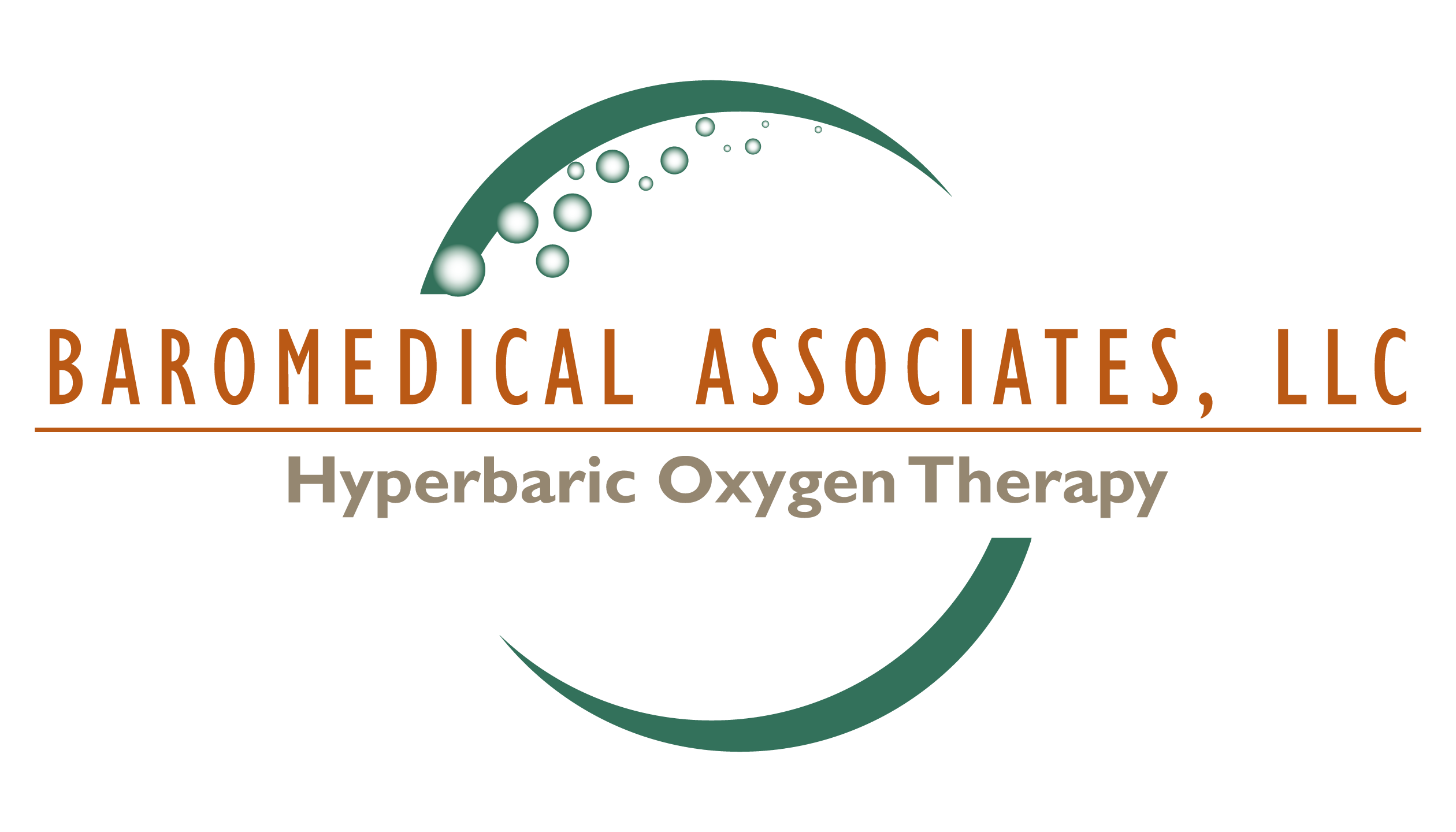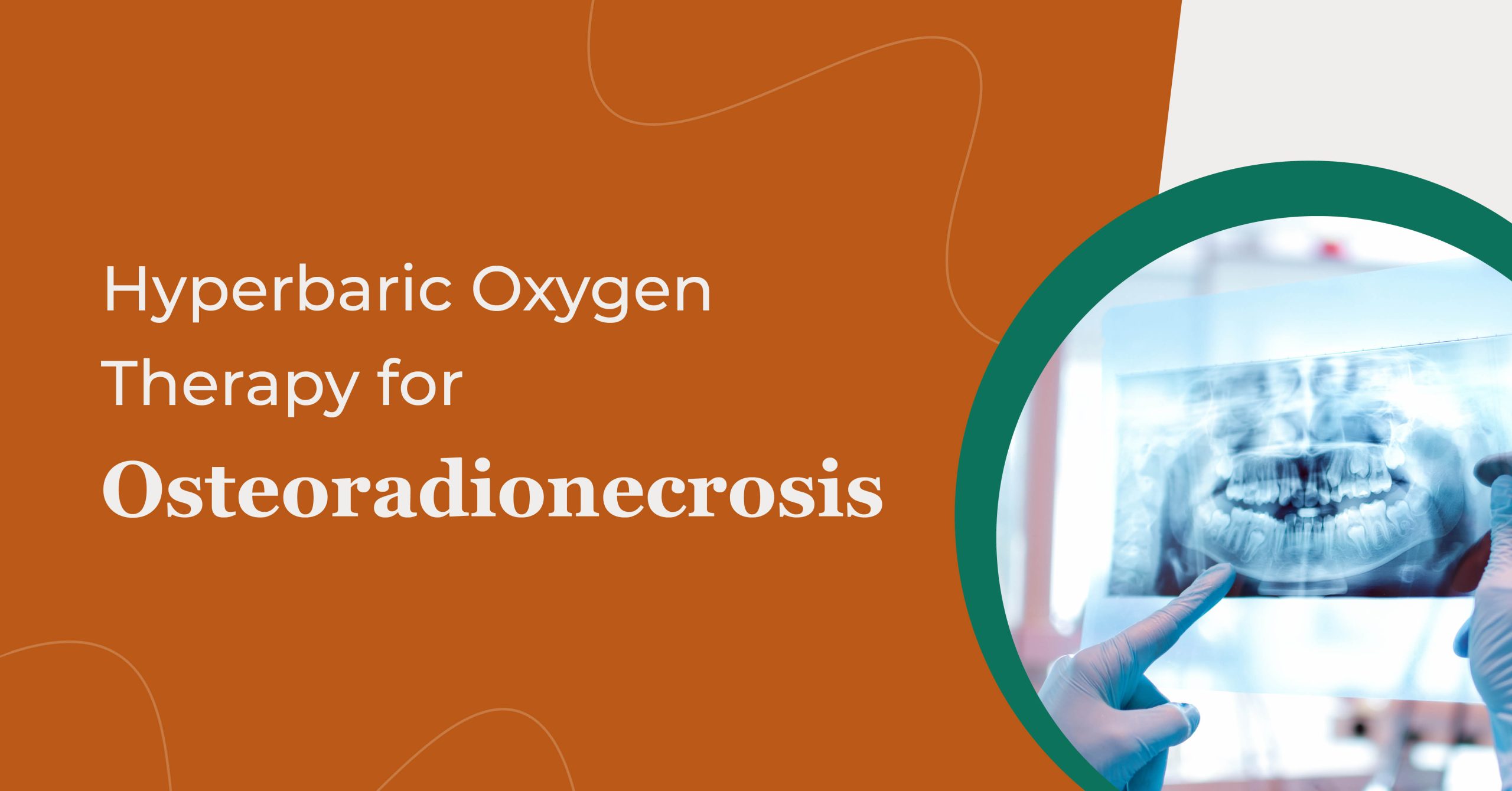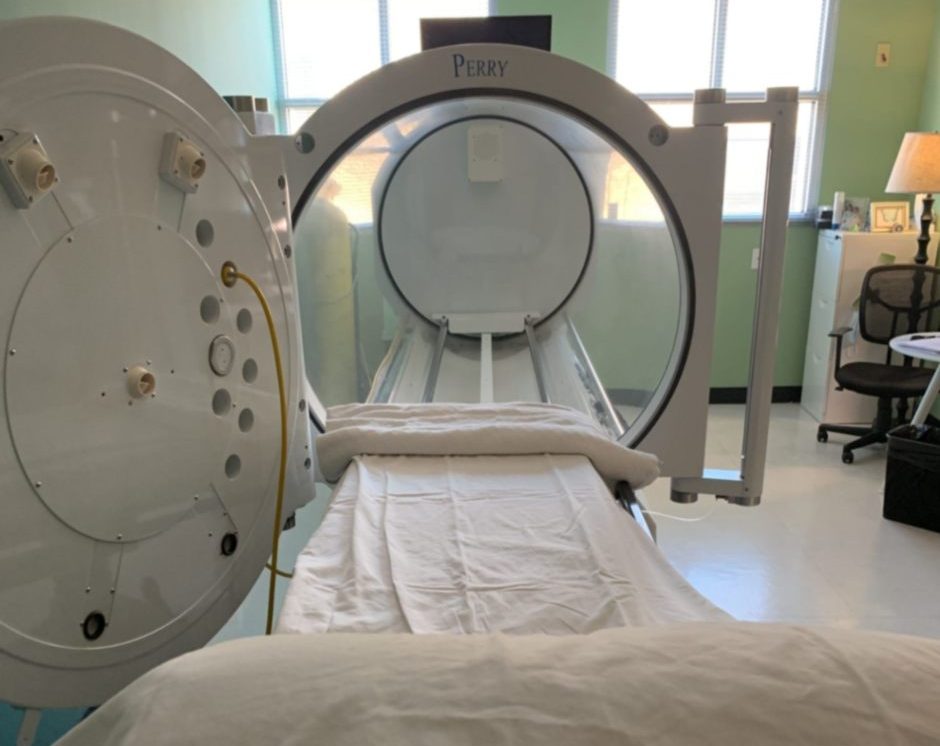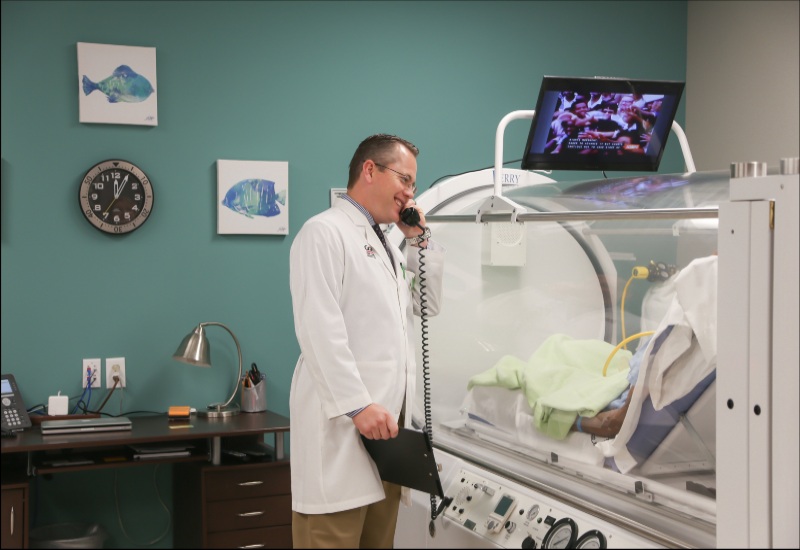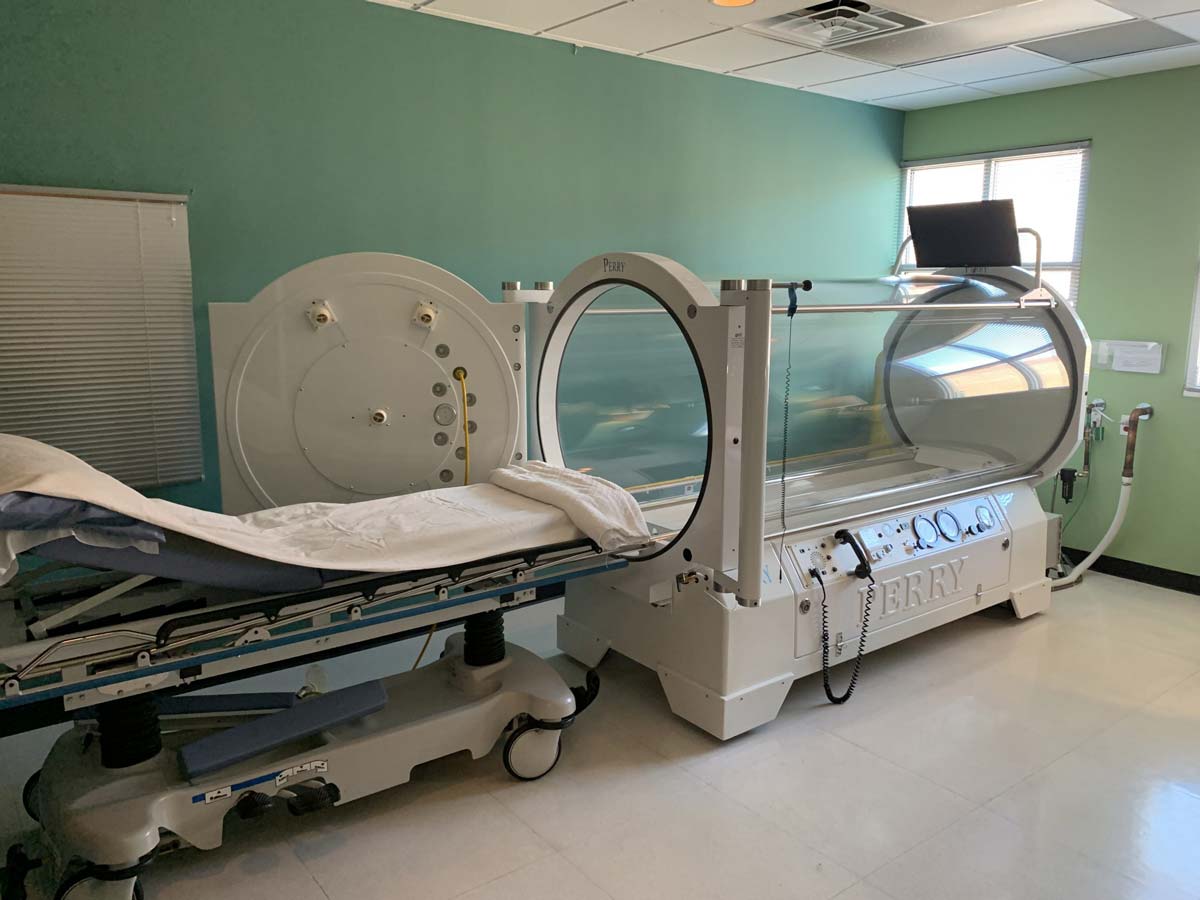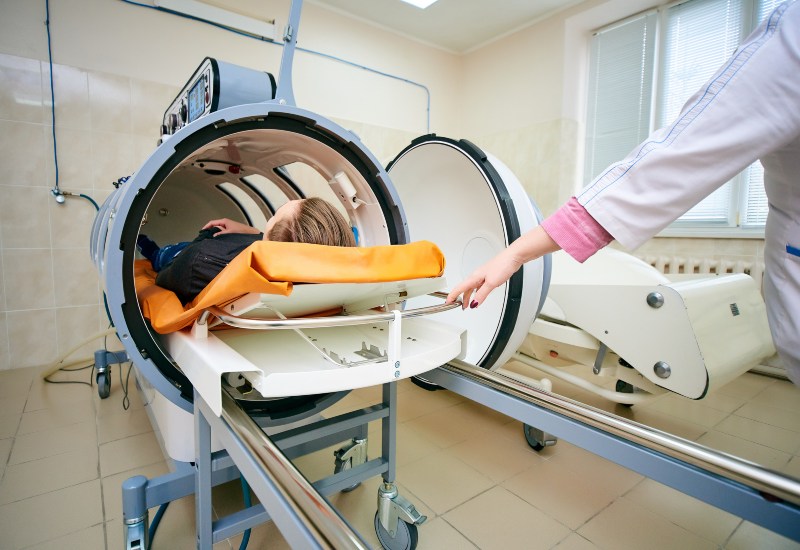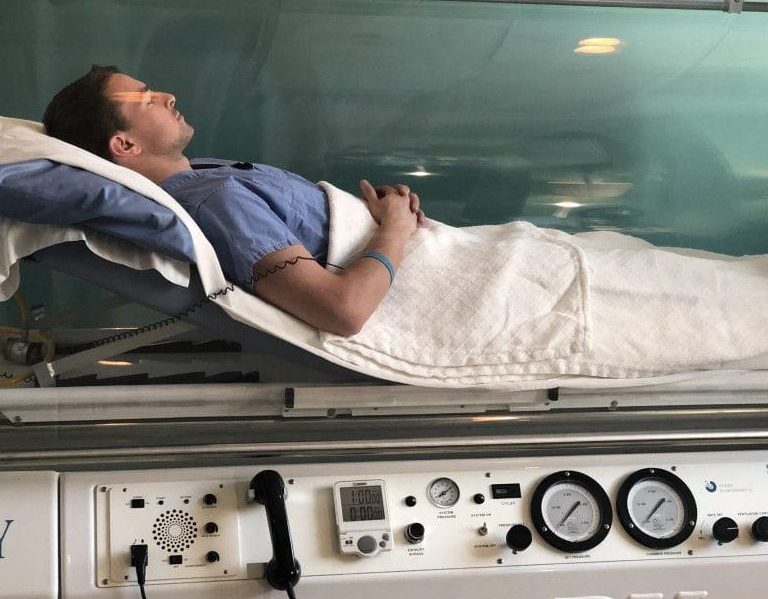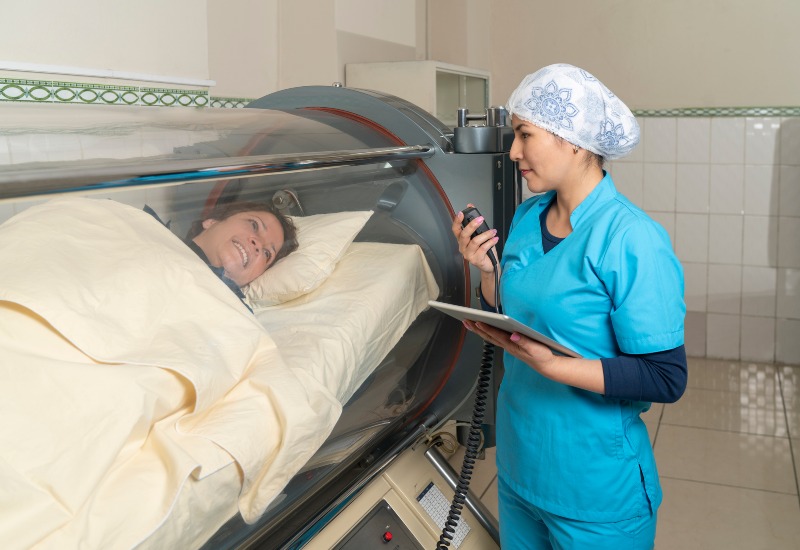How Hyperbaric Oxygen Therapy Is Effective For Osteoradionecrosis
Radiation therapy is a powerful weapon against cancer, but sometimes it causes unwanted complications. If you’ve undergone radiation for head or neck cancer and are now facing jaw pain, swelling, or exposed bone, you might be dealing with osteoradionecrosis (ORN). The good news is that hyperbaric oxygen therapy (HBOT) is an option to support your recovery.
What Is Osteoradionecrosis?
ORN of the jaw occurs when radiation damages the blood supply to the jawbone, leading to bone death. Unlike typical infections or injuries, osteoradionecrosis develops over time, often months or even years after radiation treatment. Without enough oxygen and nutrients, the bone struggles to repair itself, leaving it vulnerable to breakdown.
Osteoradionecrosis Causes
Radiation therapy is the root cause of ORN, but certain risk factors can increase the likelihood of developing it, including:
- High-dose radiation exposure
- Gum disease and oral infections
- Dental extractions post-radiation
- Smoking and alcohol use
Signs and Symptoms
ORN usually starts with mild discomfort and progresses if left untreated. Symptoms include:
- Persistent jaw pain
- Swelling or redness around the jaw
- Exposed bone inside the mouth
- Difficulty opening the mouth
- A foul taste or odor
- Jawbone fractures (in severe cases)
If you’ve had radiation therapy and notice any of these symptoms, don’t ignore them. ORN doesn’t heal on its own and requires medical attention.
How Hyperbaric Oxygen Therapy Works
HBOT gives your body a high-pressure oxygen boost. It involves breathing pure oxygen in a pressurized chamber, increasing the amount of oxygen in your bloodstream and stimulating new blood vessel growth. This reduces localized swelling and boosts your body’s natural repair process to regenerate the damaged tissue in your jaw.
Most ORN patients undergo 30 to 40 hyperbaric oxygen treatments, spread out over several weeks, depending on the severity of their condition. Each session follows a structured approach:
- Step into the chamber: You’ll sit or lie down in a comfortable, one-person chamber with see-through walls where you can nap or watch TV through the clear chamber. Because you’re in a 100% oxygen environment, nothing goes into the chamber but you and cotton clothing and bedding.
- Pressurization begins: The pressure increases gradually. Much like landing in an airplane, you’ll feel the need to pop your ears by swallowing, chewing, or yawning to help them “pop” to equalize the pressure.
- Breathe in oxygen: There’s no need to breathe differently—even if you fall asleep, the 100% oxygen you inhale dissolves into your bloodstream at higher-than-normal levels thanks to the pressurized chamber.
- Gradual depressurization: When the session ends, the pressure slowly returns to normal before the chamber opens and You’ll feel the need to equalize the pressure change by popping your ears again.
Treatment Protocols and Stages of ORN
ORN doesn’t progress the same for everyone, but there are strategies to tackle it at every stage:
- Stage I: Here, the bone is exposed but hasn’t caused a fracture. The typical approach involves 30 HBOT sessions to encourage healing. If the bone responds well, an additional 10 sessions might be added to reinforce the recovery.
- Stage II: If the initial HBOT sessions don’t do the trick, surgical intervention might be considered. This could involve removing the affected bone, followed by more HBOT sessions to support healing.
- Stage III: This is the most advanced stage, where the bone has fractured or developed a significant infection. Treatment often involves more extensive surgery, possibly including reconstruction, along with more HBOT sessions to aid in recovery.
Benefits of Hyperbaric Oxygen Therapy for ORN
HBOT is a proven treatment option for osteoradionecrosis of the jaw. Here’s a look at its effectiveness as supported by years of studies:
- Enhanced healing: HBOT has been shown to promote healing in ORN patients. The results of a 2023 systematic review showed that 70% of patients treated with surgery and HBOT experienced healing, compared to 51% with surgery alone.1
- Symptom improvement: Along with enhanced healing, patients undergoing HBOT have reported improved pain levels and other secondary symptoms associated with ORN. The same 2023 systematic review observed that 70% of patients experienced significantly reduced pain, 62% showed better jaw function, 41% had improved speaking ability, and 71% reported less dry mouth.1
- Prevention of ORN: HBOT has been associated with a lower incidence of ORN. A retrospective audit published in 2023 looked at data from people having teeth extracted who had previously received radiation therapy to the head and neck. The audit revealed that only 9.1% of patients who underwent prophylactic (preventative) HBOT developed osteoradionecrosis following the extractions, suggesting a potential protective effect.2
- Adjunctive surgical benefits: HBOT has demonstrated improved outcomes when used alongside surgical interventions. A 2020 study highlighted that combining HBOT with surgery resulted in better healing rates and reduced complications in ORN patients. HBOT also proved therapeutic in irradiated wound care where surgical correction was not feasible.3
Challenges of HBOT for ORN
While hyperbaric oxygen therapy offers numerous potential benefits, it’s not without its challenges:
- Time commitment: HBOT needs time to deliver maximum benefits, so sessions last up to 90 minutes and are scheduled multiple days a week for several weeks.
- Minor side effects: Some patients experience minor discomfort, such as pressure in the ears, mild fatigue, or temporary vision changes.
- Access to treatment: HBOT is a specialized service, with only a few medical centers offering it, so finding a facility may require travel.
- Insurance coverage: Many insurance plans cover HBOT for radiation tissue damage, which should include ORN, but policies vary. Pre-authorization may be required to ensure coverage.
Despite these challenges, many patients find that the benefits outweigh the drawbacks—especially when it comes to avoiding more invasive surgeries.
Why Choose Baromedical Associates?
If you’re considering hyperbaric oxygen therapy for osteoradionecrosis, Baromedical Associates provides the services you seek. We provide the most advanced and effective HBOT available using large clear FDA-approved, single-person hyperbaric chambers to ensure comfort and safety. Patients travel from all over the world to seek care at our four facilities in the Dallas Metroplex area. We’re here to support your healing journey. Contact us today to learn more.
